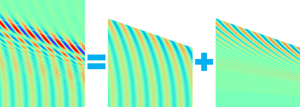No CrossRef data available.
Article contents
An Earth-fixed observer to ship waves
Published online by Cambridge University Press: 01 April 2024
Abstract

This work deals with the linear surface waves generated by a vessel advancing at a constant forward speed. These waves, known as ship waves, appear stationary to an observer on the vessel. Rather than exploring the well-studied stationary ship waves, this work delves into the physical properties of ship waves measured at Earth-fixed locations. While it might have been expected that analysing these waves in an Earth-fixed coordinate system would be a straightforward transformation from existing analytical theories in a moving coordinate system, the reality proves to be quite different. The properties of waves measured at fixed locations due to a passing ship turn out to be complex and non-trivial. They exhibit unique characteristics, being notably unsteady and short crested, despite appearing stationary to an observer on the generating vessel. The analytical expressions for the physical properties of these unsteady waves are made available in this work, including the amplitude, frequency, wavenumber, direction of propagation, phase velocity and group velocity. Based on these newly derived expressions and two-point measurements, an inverse method has been presented for determining the advancing speed and the course of motion of the moving ship responsible for the wave generation. The results from this study can be used in a wide range of applications, such as interpreting data from point measurements and assessing the roles of ship waves in transporting ocean particles.
JFM classification
- Type
- JFM Papers
- Information
- Copyright
- © The Author(s), 2024. Published by Cambridge University Press





